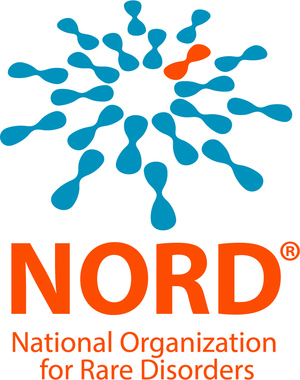WASHINGTON, Oct. 18, 2018 /PRNewswire/ -- Despite a record-breaking number of new approvals, orphan drugs remain a nominal part of overall drug spending, accounting for only 9.6% of total sales in the U.S. in 2017, according to a new study released today by the IQVIA Institute. The study was commissioned by the National Organization for Rare Disorders (NORD) for the second year in a row to show trends in orphan drug usage and costs.
The major findings of the report are as follows:
- The Orphan Drug Act remains successful in encouraging the development and approval of orphan drugs. In 2017, the Food and Drug Administration approved 80 orphan indications and 57 just within the first eight months of 2018 -- shattering previous records.
- The Orphan Drug Act has not been a major driver of drug pricing in the U.S. In 2017, the median price of the top 10 rare disease therapies used by the greatest number of patients was less than $10,000 per year.
- In 2017, orphan drugs remained a small part of the overall medicine budget. Total drug spending in the United States in 2017 was $451 billion, with almost 56% spent on non-orphan traditional drugs, 34.7% spent on non-orphan specialty drugs and 9.6% spent on orphan indications of approved orphan drugs. That is a 1.7 percentage point increase over 2016, which is in line with increased FDA approvals.
"2017 was a year of innovation and advancements in rare diseases, with more FDA approvals of treatments for rare diseases than ever before," said NORD President and CEO Peter L. Saltonstall. "The recent IQVIA Institute study highlights the enduring importance of the Orphan Drug Act in making that progress possible."
"It is critical to note that orphan drugs remain a sliver of overall drug spending in the U.S.," Saltonstall said. "NORD remains committed to shining a light on the simple truths that illustrate how the Orphan Drug Act continues to be vital to the future of rare disease drug research and development."
About 7,000 rare diseases have been identified, affecting approximately 30 million Americans. Many affect only a few hundred or a few thousand individuals. Rare diseases tend to be chronic, serious and life-threatening. More than 80 percent are believed to be genetic.
Information on the report, including a link to the study, is available on the NORD website at www.rarediseases.org/rareinsights.
Editor's note: Peter L. Saltonstall, President and CEO of NORD, is available for interviews on the report. Contact Laura Mullen at [email protected].
About the National Organization for Rare Disorders (NORD)®
The National Organization for Rare Disorders (NORD)® is the leading independent advocacy organization representing all patients and families affected by rare diseases. NORD is committed to the identification, treatment and cure of the 7,000 rare diseases, of which only 5% have an FDA-approved treatment or therapy. Rare diseases affect 30 million Americans, or 1 in every 10 people. More than half of those affected are children.
NORD began as a small group of patient advocates that formed a coalition to unify and mobilize support to pass the Orphan Drug Act of 1983. For more than 35 years, NORD has led the way in voicing the needs of the rare disease community, driving supportive policies and education, advancing medical research, and providing patient and family services for those who need them most. NORD represents more than 280 disease-specific member organizations and their communities and collaborates with many other organizations in specific causes of importance to the rare disease patient community.
SOURCE National Organization for Rare Disorders (NORD)
Related Links
WANT YOUR COMPANY'S NEWS FEATURED ON PRNEWSWIRE.COM?
Newsrooms &
Influencers
Digital Media
Outlets
Journalists
Opted In






Share this article